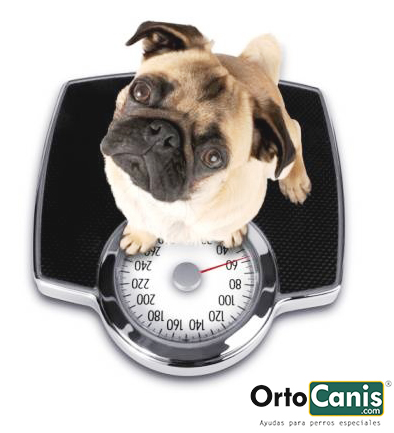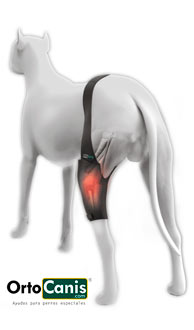Tips for fixing this dangerous problem

During the holidays, many of us tend to get carried away in all respects, but especially with our eating habits. Sometimes our canine and feline companions join in with us.
But be careful! Obesity is the most common form of malnutrition in dogs and cats in developed countries and hyperadiposity is estimated to exist in 34% to 59% of dogs and in 27% to 39% of cats (Laflamme, 2012*). According to a study by the Certified Physical Therapy Society of the United Kingdom*, more than 80% of animal physical therapists indicate that obesity is the number one health risk for domestic dogs and cats. They also show that the majority of owners tend to overfeed their animals and do not encourage them to get sufficient exercise. By providing some of the following statistics, we can learn about, help to correct or prevent the important health issue that obesity means for dogs, especially now in the season of uncontrolled eating!
The primary causes of canine obesity are factors over which we have complete control, overfeeding and lack of exercise. We therefore must take more responsibility when it comes to our faithful companions by preventing these causes, keeping in mind all the risks they pose to their health. Other factors that also increase the risk of obesity range from the type of breed to certain predisposing diseases. With regards to the breed, Basset Hounds, Golden Retrievers, Labrador Retrievers, Cocker Spaniels, Beagles, Cairn Terriers and Cavalier King Charles Spaniels are a few that have a tendency to be overweight. Regarding predisposing conditions, hyperthyroidism is one of the leading predisposing diseases for obesity, due to that it slows down the metabolism of the affected animal.
Joint problems are one of the main consequences of obesity. By overburdening the joints and ligaments with excess weight, these suffer higher joint stress and may also end up with soft tissue damage. On the other hand, the reduction of physical exercise can lead to decreased muscle tone. Obesity’s contribution to joint damage goes beyond just increased joint stress; it is also due to the fact that obesity increases inflammatory mediators and oxidative stress, both associated with arthritis (Laflamme, 2012*). Osteoarthritis, or degenerative joint disease, is the most common joint problem found in dogs. Obesity also has negative consequences in other systems besides the musculoskeletal. The greater the degree of obesity, the greater the cardiovascular problems will be, as well as the probability of suffering mellitus diabetes, having breathing and digestive problems, neoplasms, heat and exercise intolerance…
If you notice that your dog has this problem, we have some tips for you, the two most important being a diet specifically designed with the help of your veterinarian and an increase in physical exercise. Nevertheless, we must be careful not to over-exercise dogs that are growing, due to the fact that until they are skeletally mature there will be a higher risk of damaging muscles, tendons, ligaments or bones. In this regard, it is prudent to consult with our veterinarian and find out which level of development our animal will acquire, since the risk of joint injuries and the growth rate will depend on factors such as breed or size. We will also assess the use of chondroprotectors or joint protectors for preventing joint damage.
With regards to the specific diet, it must be strictly adhered to if we want to be successful. On the other hand, we must avoid giving treats and, if we really can’t abstain from giving them because it breaks our heart, we must set a daily number of “exception-treats” that the veterinarian will also take into account when designing the weight loss plan (in order to include it in the calorie count) and that all members of the family must respect and not exceed.The joint protectors and the chondroprotectors will help us for prevention as well as for joint performance during physical activities. Natural anti-inflammatories are another good alternative to nonsteroidal anti-inflammatory drugs (NSAIDs) if there is joint pain. However, the best prevention is undoubtedly keeping your canine or feline companion at bay in terms of dietary excesses and ensuring they get enough physical exercise. Going for walks will enable you to always be in the best shape, while generating numerous health benefits for both.
*1 D.P. Laflamme. Nutritional Care for Aging Cats and Dogs. 2012. Vet Clin Small Anim 42 (769-791)*2 M2 Communications Ltd. The Chartered Society of Physiotherapy: A healthy dog is for life –and over Christmas!; New CSP study shows UK pet owners guilty of overstuffing their pooches. 2004. ProQuest Central.Clara Castells Urgell
Ortocanis Veterinarian


